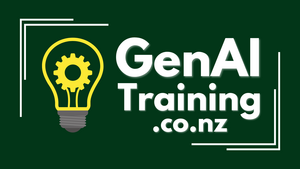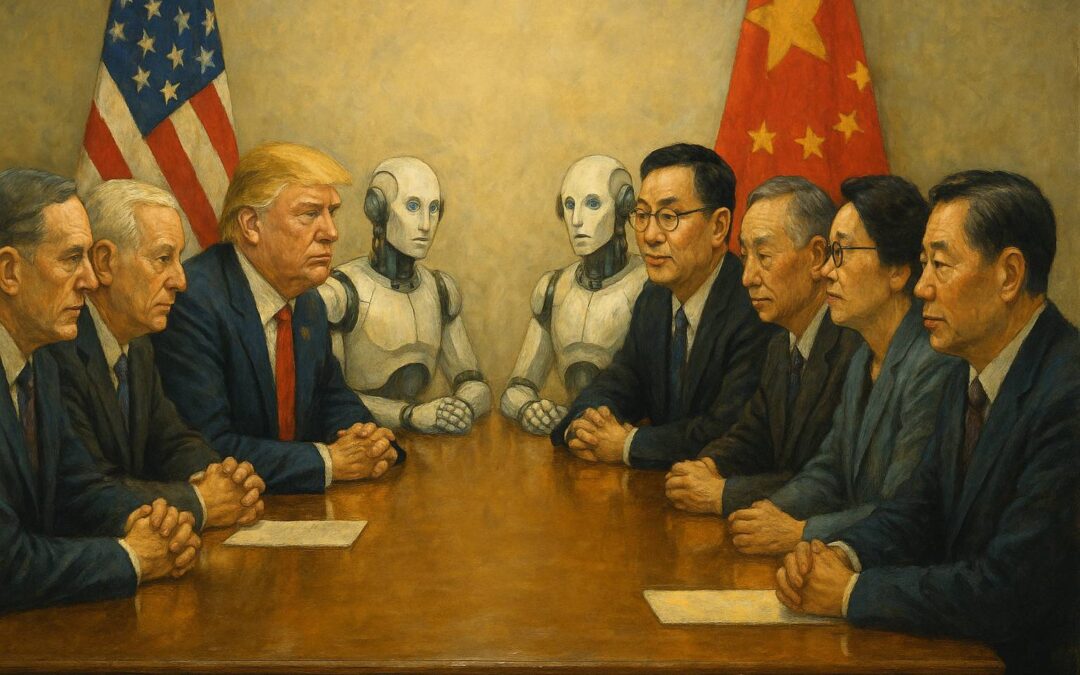
“Censorship and political control of AI is a thousand times more dangerous than censorship and political control of social media, maybe a million times more dangerous.”
– Marc Andreessen
Hello Reader,
There have been a lot of practical advances in AI tools recently, including:
- ChatGPT Agent — now it can do things, not just make things.
- OpenAI GPT-5 — including a rollback for nostalgists.
- Grok Imagine — it’s like if Pinterest and Midjourney had a baby.
- OpenAI gpt‑oss — download and run a local LLM.
- Google’s Gemma LLM — can be run from a mobile phone.
I’m upskilling myself in these new tools, so I can pass on what I learn to the students in my AI training workshops.
What has me most interested is the new release in the last month of AI strategies from both the US and China. You can read the reports in their entirety via the links below, or practise your AI skills by adding them to a LLM and asking for an overview. Try having a conversation with these documents.
The United States AI Strategy: Deregulation and Speed
Released July 23, 2025 by the White House, the U.S. plan aims to strip regulatory barriers and turbocharge American dominance in AI. It leans heavily on deregulation, infrastructure buildouts and alignment with private sector power brokers.
Key Points:
- Deregulation First: executive orders on AI safety revoked; fewer federal checks required to innovate.
- State Autonomy: federal funds tied to compliance, but wide latitude is given to states.
- Private Sector Driver: Big Tech and start‑ups take the lead, with minimal oversight from government.
- Infrastructure Buildout: fast‑track chip fabrication and data centers to fuel growth.
- Anti‑DEI Procurement Rules: federal agencies are barred from using “woke” or “biased” AI models—prioritising capability over ideology.
The China AI Strategy: International Centralisation
Days later on July 26, 2025, Premier Li Qiang announced China’s plan at the World Artificial Intelligence Conference. The strategy emphasises centralised coordination and pushing for a global governance framework under Chinese leadership.
Key Points:
- Global Governance Role: proposes an international body of multiple stakeholders to oversee AI safety and standards.
- Centralised Alliances: Huawei, Biren and others unify chips and models under shared APIs.
- Applied AI: public safety, healthcare and government sectors are already deploying at scale.
- Capital Commitment: nearly NZ$100 billion pledged to accelerate domestic AI.
- Exportable Standards: developing a full stack of technology and rules for allies to adopt as international standards.
Deregulated Innovation vs Centralised Coordination
The U.S. is choosing speed through deregulation, even if it risks fragmentation and politicisation. China is choosing coordination through centralisation, aiming to set both the pace and the rules of the game.
For New Zealand, our government’s AI strategy positions us firmly as a follower in the race to AI adoption. In Reid Hoffman’s book Supremacy, he defines four types of AI perspectives:
- Doomers: Skynet is coming; AI will kill us all.
- Gloomers: AI won’t bring an apocalypse, but it will be a net negative for humanity.
- Zoomers: let’s grow as fast as possible, to beat someone else who has different values from achieving AI dominance first.
- Bloomers: let’s grow quickly within guardrails.
Out of these two options, which would you prefer? Let me know in a LinkedIn comment.
Demo Video
Watch this short demo of Veo3 & Google Flow:
https://www.youtube.com/watch?v=rwF-X5STYks
The Future of Intelligence is Agentic
I’ve been leading training workshops for Agentic Intelligence, where I have joined as their Head of Learning & Enablement. You can see some of the workshops I lead here: https://agenticintelligence.co.nz/training.
Reach out if you’d like to discuss an in‑person workshop in Christchurch, or a webinar series for your team.
Ready to skill up?
- Register for an upcoming workshop
- Start learning with our self‑paced course
- Join our free webinar series
Warmly,
Caelan






